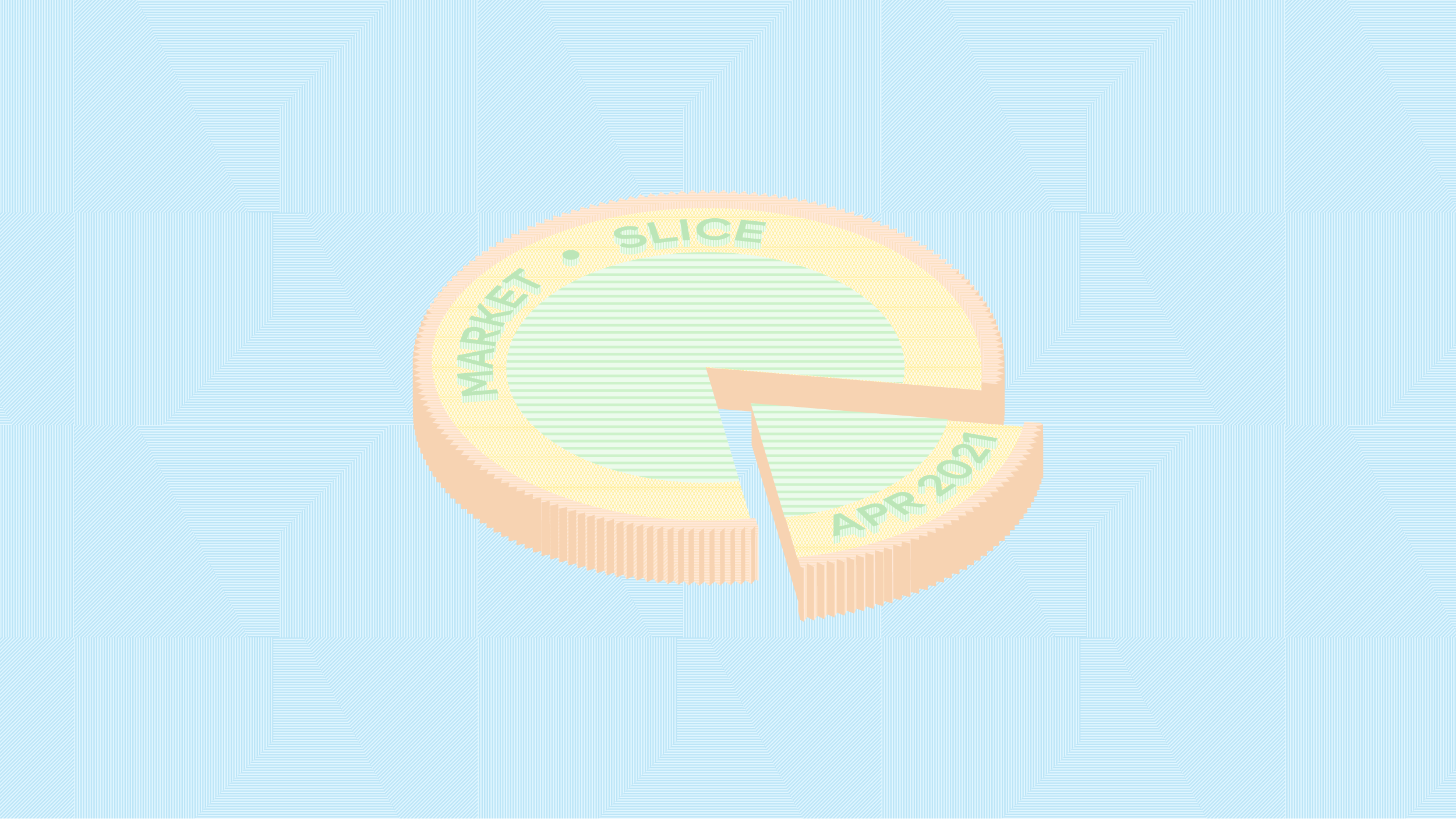
Market slice is a monthly summary of mutual funds on Cowrywise and key money news. This jargon-free report is shared on the 3rd of every month. Share lessons on Mutual Funds in March 2021 using the hashtag: #MarketSlice.
Holla ?
Almost no one in our lifetime had experienced a pandemic before last year. However, it’s only fair to assume that people wouldn’t save or invest much during such a trying period. I took some time to explore this with the data guys at Cowrywise. Our findings were interesting.
On Interesting Things: Money Market Funds Push Weighty Returns in April ??♂️
It seems like there’s no stopping with money market funds. They’ve been flexing their muscles for three months straight. This flex started in February 2021; after a slow pace of returns for dating as far back as February 2020. April was another interesting month for these star funds with their average returns jumping from 3% per annum to 4% per annum. As I mentioned last month, we really can’t tell how long this rally will last for but it’s great for you if you are particularly interested in low-risk investments.
Top Money Market Funds in April 2021
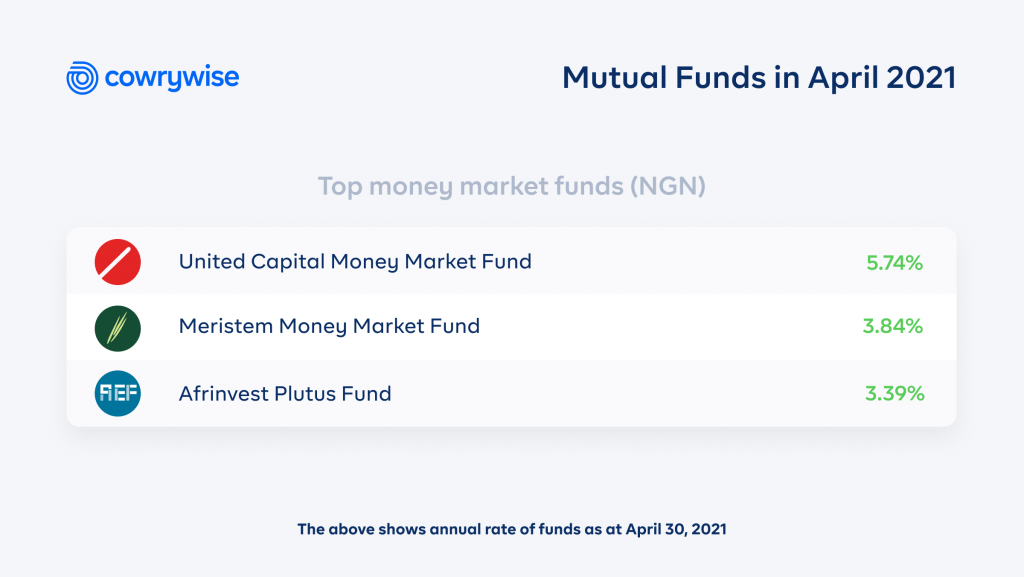
Some Fixed Attention ?
Fixed income funds are a type of mutual fund that invests in instruments such as bonds. Recently, these instruments have been dishing out good yields so much that stock investors have been cheating on stocks with them. Flashback; in 2020, the Nigerian stock exchange was the best performing globally.
However, between February and March, things went south. As expected, investors started to shift attention and their gaze fell upon a safer option with stable returns in the fixed income space.
Top Fixed Income Mutual Funds in April 2021 (Naira)
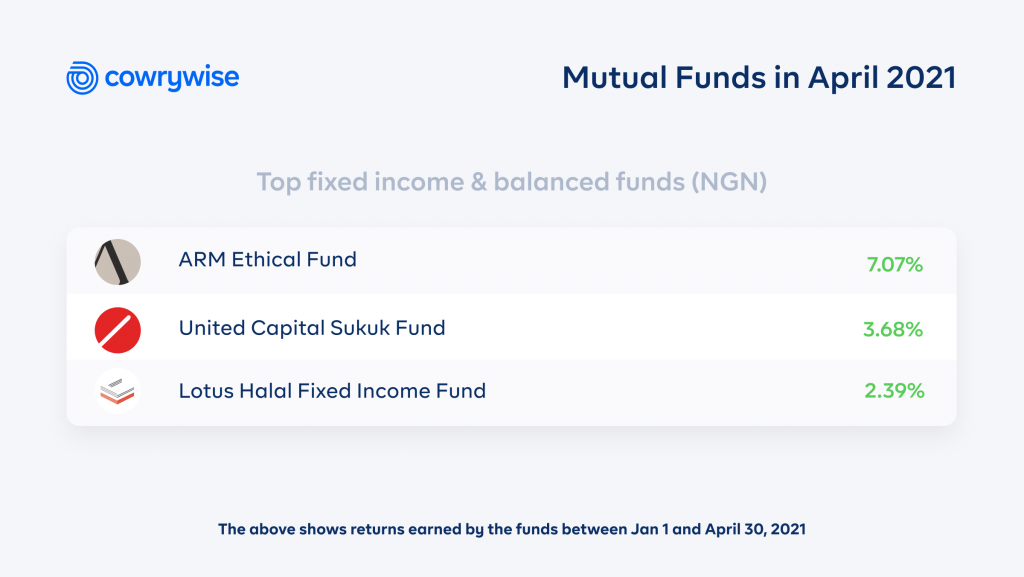
Top Fixed Income Funds in April 2021 (USD)
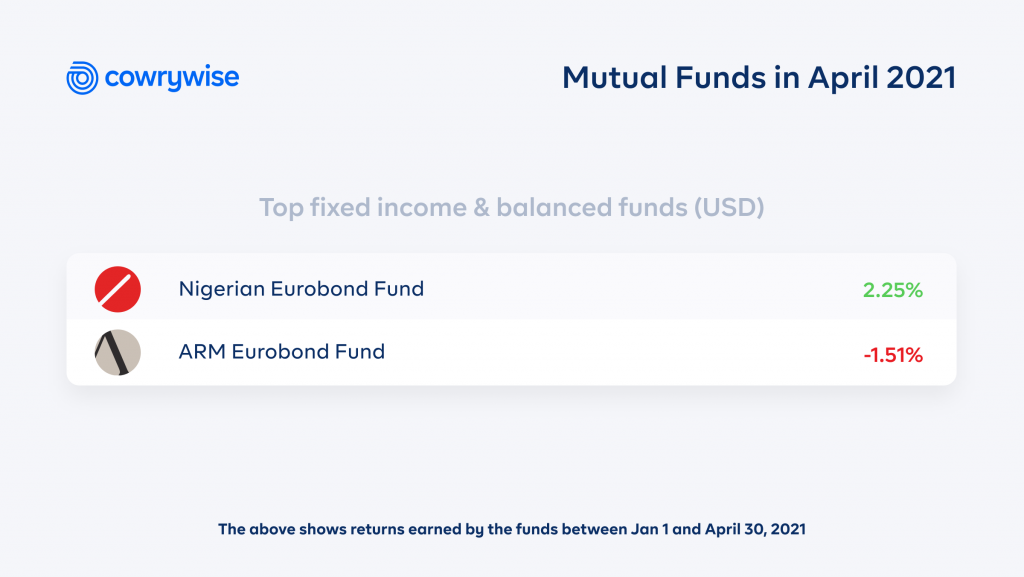
Equities are Rising ?
Just so you don’t get lost, equities are the same thing as stocks. I am still not sure why I prefer to use equities, but you get the idea right? Great. Let’s get things going. A common saying amongst investors in the stock market, when losses occur, is: “The market was bloody today”.
This saying is based on colours used to depict gains and losses. When a stock gains, this is signified by green and when losses happen the marker turns red. Hence, since red matches the look of blood a day with so many reds is tagged a bloody day. But what happens when days turn to months? Not great.
Despite coming out tops in 2020, February and March 2021 were bloody months for the Nigerian stock market. Investors were scared that companies would report losses due to the pandemic, so they sold their shares in large numbers before companies announced performances of last year.
Performances serve as an indicator of the ability of a firm to pay dividends to investors. So, you understand the reason for panic. However, investors were shocked by the impressive results. This of course restored confidence and boosted the stock market in April 2021. If things continue this way, equity funds are set to rise. This is not an assurance though.
Top Equity Mutual Funds in April 2021
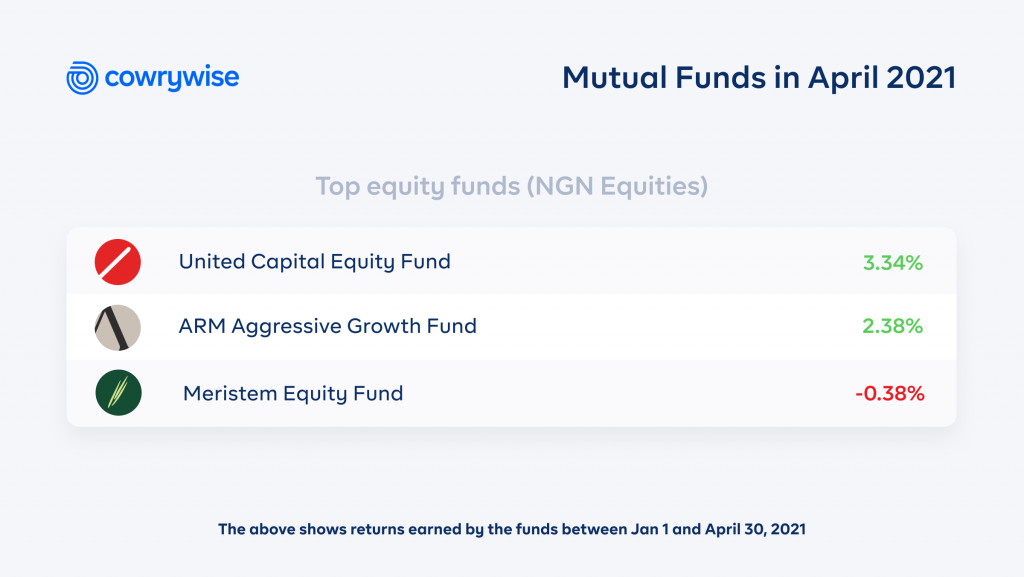
How about a Joke (Coin)? ?
Recently, the world has been swept by the frenzy of cryptocurrencies. The fear of missing out has probably never been greater with even some of the world leading investment firms acquiring crypto assets. But that’s not the big news, joke coins are.
In 2013, two engineers created a cryptocurrency to joke about the rise of bitcoin. To ensure the joke sold itself, they made use of a popular dog-faced meme at that time. That led to the creation of the first meme coin. Unlike other digital coins which have some form of fundamentals, this one is basically a joke gaining traction. It’s not an attack but exactly what it is.
Why is it gaining traction then? That’s how things work with herd mentality. No one wants to miss out so they follow the crowd. However, does this mean you shouldn’t purchase? No comments on that. As a firm, we are indifferent about cryptocurrencies. Here’s all we’ll say, do your research and remember to always bring the money home where it’s safe (Cowrywise).
? Data Snap of the Month
The minimum wage in 1981 was ₦125, but it is worth more than today’s minimum wage of ₦30,000 in terms of purchasing power. Get the breakdown here.
